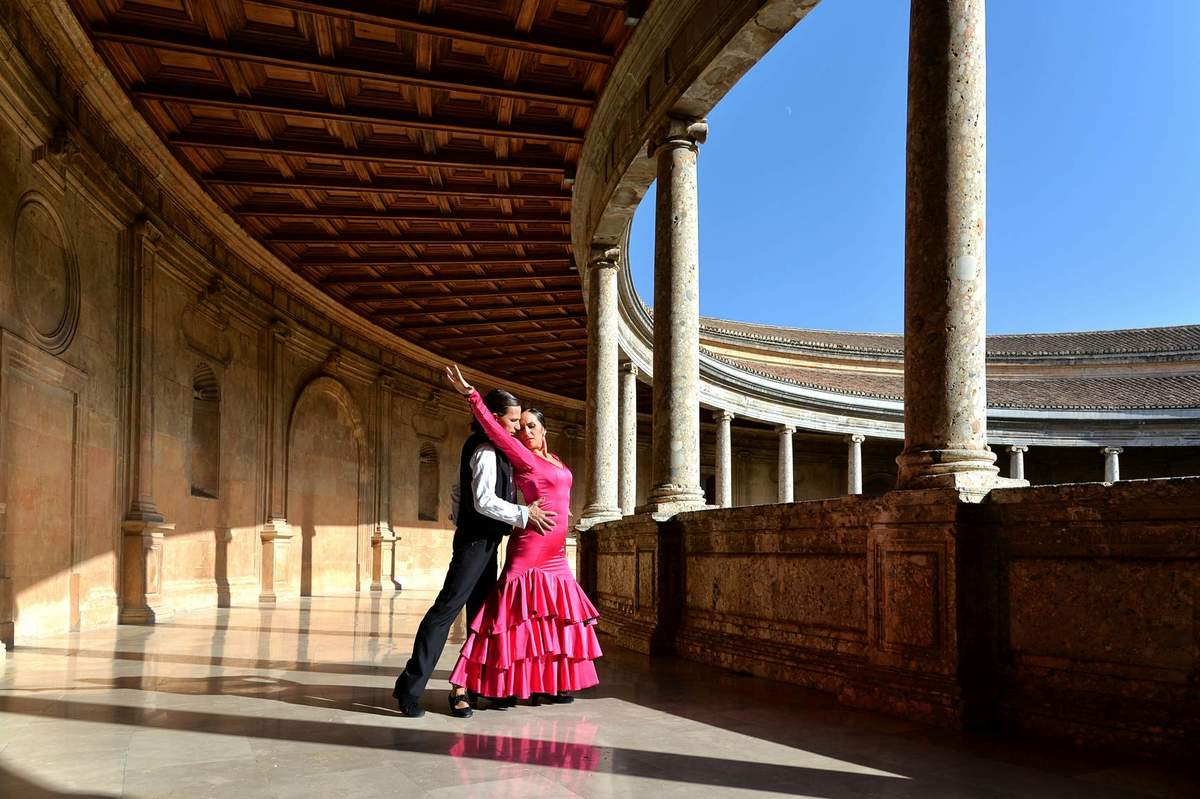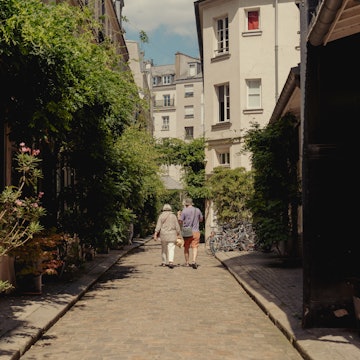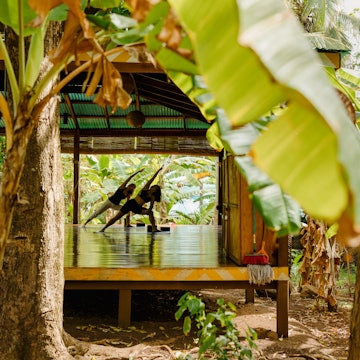

See the Catedral de Sevilla, and more, in Spain's Andalucía region. Vladislav Zolotov/Getty Images
From secluded pebbled coves perfect for unwinding to destinations steeped in the rich history of flamenco, Andalucía offers a diverse range of attractions that cater to every type of traveler year-round. This Spanish region features everything from scenic, winding mountain roads and an extraordinary natural park to the awe-inspiring Gothic Catedral de Sevilla and Spain’s finest jamón ibérico. Hop from the secluded natural spaces, ornate architecture, and religious spectacles of Seville, then discover the coastal resorts, mountain villages, and ancient history of Málaga.
If thoughts of how to choose between historic cities, epic gorge hikes, and flamenco museums leave you feeling frazzled, don’t worry. Simplify your travel itinerary by prioritizing these best things to do in Andalucía.
Seville & Huelva
1. See the awe-inspiring Gothic Catedral de Sevilla
The world’s largest Gothic building, officially known as the Catedral de Santa María de la Sede, the Catedral de Sevilla in Seville is a veritable feast of artworks and skilled craftwork, both inside and out. Flying buttresses, cheeky gargoyles and lavish Gothic ornamentation decorate the exterior of this remarkable feat of creation, which bears testament to the inspirational power of religious fervor.
Planning tip: Visit early to avoid the hottest part of the day, and book tickets as far in advance as possible. Early morning tickets sell out quickly.
2. Explore Seville’s Giralda
La Giralda, a former minaret repurposed as Catedral de Sevilla’s noteworthy bell tower, features expansive views over Seville from the belfry. Look out over the rooftops, then go back to the bottom of the Giralda, heading clockwise, the often-closed Capilla Real contains some important royal tombs, including the remains of the city’s Christian conqueror, Fernando III, in a silver urn.
La Giralda also contains major art treasures, including a Goya in the Sacristía de los Cálices, a Zurbarán in the Sacristía Mayor, and Murillo’s shining La Inmaculada in the Sala Capitular. Still hugging the exterior wall, the four sturdy figures carrying an ornately carved catafalque mark the Tomb of Columbus.
Local tip: Don’t miss the retablo (altarpiece), which lies at the very heart of the cathedral in the Capilla Mayor. Intricately carved from wood and covered in gold leaf, it was started in 1482 by Flemish sculptor Pieter Dancart, who dedicated the rest of his life to it, with others completing it long after his death.

3. Stroll through the Plaza de España
Created in 1929, the main building of the mighty Plaza de España, curved in a vast C-shape, cradles a D-shaped moat within, where people row little boats beneath its four bridges. The buildings are primarily neo-Mudéjar, but combine elements of art deco, and Renaissance- and baroque-revival architecture in a spectacular medley of arcades, azulejos tiles, delicate towers and airy vestibules.
Planning tip: The free Military History Museum within showcases regional weaponry and military uniforms.
4. Explore the patios and palaces of Real Alcázar de Sevilla
Exquisitely decorated and with a labyrinthine quality, the palaces, courtyards and gardens of Seville’s Real Alcázar complex are a memorable spectacle. Entry to the Real Alcázar is through the dusty peach-colored Puerta del León (Lion’s Gate) on Plaza del Triunfo. As you pass into the Patio del León (Lion’s Courtyard), the Sala de la Justicia (Hall of Justice) is on your left. On the other side is the pretty Patio del Yeso (Plaster Courtyard), part of the 12th-century Almohad palace, complete with a pond stuffed with goldfish.
The grander patios and palaces await, including the must-see Patio de la Montería, Palacio de Don Pedro, Patio de las Doncellas and Palacio Gótico. You’ll find ornate stonework, a golden-tiled dome ceiling, a sunken garden, and a fantastic hedge maze throughout.
5. Taste the finest jamón ibérico in Aracena
Learn all about how the Sierra de Aracena’s landscape and time-tested pig-rearing methods are able to produce Spain’s most revered and succulent ham at the Museo del Jamón. Audio guides are available in five languages. To get closer to the source, the small town of Jabugo is said to produce the best jamón in all of Spain (and thus the world). Jamones Eíriz Jabugo is a family-run tour company taking guests to a farm near Aracena to mingle with the pigs in their oak pastures, before visiting the salting and curing chambers. Tastings are included at both sites.
Planning tip: Fans of melt-in-the-mouth jamón ibérico can sample four grades of ham at José Vicente in Aracena.

6. Spot the shy Iberian lynx in the Parque Nacional de Doñana
World Heritage-listed wetlands and protected rare wildlife occupy a vast tract of Huelva province at Parque Nacional de Doñana. Each day, elusive Iberian lynx skulk through the scrub, rosy flocks of flamingos paint the evening skies a pastel pink, and herds of deer bound through the cotos (woodland on stabilized sandy soil). The park provides a refuge for 360 bird, 37 mammal and 21 reptile species.
Planning tip: Taking your own vehicle into Parque Nacional de Doñana is forbidden, although you can park at El Rocío, one of the main gateways to the park, and take a guided tour from there. The most popular option for most visitors is to take a tour from Seville, which handles all transportation and access issues in one go.
7. See the spectacle of Semana Santa
Semana Santa is Andalucía’s most important religious festival and arguably the region’s most impressive spectacle, rooted in centuries-old tradition. If you want to watch a procession, download the Semana Santa app for specific cities, pick your spot hours ahead of time, and bring plenty of water, a sun hat and a foldable chair – the vast majority of seating along procession routes is reserved for locals who pay a premium for it.
Balconies along procession routes are especially sought-after and are mostly used by lucky locals and their friends and family, but in some cases, they’re prepared to rent them out to visitors. Alternatively, seek out a small-group or private Semana Santa tour with local guides that include balconies along prime procession-watching routes, book accommodation months ahead of time with good views of principal streets, or make reservations at a well-located restaurant.

Granada & Almería
8. Admire the unparalleled beauty of the Alhambra
One of the most architecturally perfect buildings in existence and Spain’s second most-visited attraction, the Moorish palace-fortress of Alhambra sits high above Granada, encircled by defensive walls. Alcazaba occupies Alhambra’s western tip with unparalleled views of Albayzín, the Sacromonte hills, and Granada’s rooftops. The Museo de la Alhambra features superb tilework, the elaborately carved wooden door from the Sala de Dos Hermanas, and the excavated remains of the Acequia Real (Royal Water Channel).
9. Climb inside La Geoda de Pulpí crystal cave
In an abandoned silver mine in the Sierra de Aguilón, near the border with Murcia province, geologists found the world’s second-largest geode, 8m (26 ft) long and 2m (6.6 ft) tall in 2019. Book well ahead for the 90-minute Spanish-language guided tours (enquire ahead if an English-speaking guide is available) of La Geoda de Pulpí.
The tours will take down through tunnels glistening with mineral deposits and show off a cathedral-like cavern with a massive spiral staircase. The tour de force is the descent 50m (164 ft) below the surface, where you get to climb inside the actual geode – a giant crystal resembling a sparkling cave.
10. Jump into gin-clear river pools in Parque Nacional Sierra Nevada
Spain’s largest national park is home to several adrenaline-packed activities in Granada. Scramble along via ferrata routes and abseil down gorges to jump into limpid river pools on canyoning excursions.
Nevadensis (nevadensis.com) is an extremely knowledgeable, all-encompassing outdoor adventure outfit based in Pampaneira – professional guides offer expert advice and maps, plus organize anything from via ferrata sessions and canyoning to guided hikes and mountaineering courses. In Bayárcal, B Natural (bnaturalsport.com) also offers canyoning, plus Andalucía’s longest zip wire, which’ll have you flying for 600m (1968.5 ft) over a gorge at high speed.
Cádiz & Gibraltar
11. Sip extra-aged sherries at Bodega Manuel Aragón
Follow flavor at Bodega Manuel Aragón in Cádiz. During a 90-minute visit to the bodega, you tour the vineyards, where grapes are harvested each September by hand, and then the bodega, where the de-stemming, pressing and fermentation processes are explained. Learn about the solera process and the bodega’s history of ownership from the current proprietor.
Planning tip: The highlight is the sherry tasting: it’s well worth opting for the premium tour (€42 or about US$44).
12. Feel flamenco rhythms at Peña Flamenca La Perla
Also in Cádiz, Peña Flamenca La Perla exemplifies one of the original homes of flamenco. On Friday night, the cavernous venue, set romantically next to the crashing Atlantic surf in the Barrio de Santa María, fills up with aficionados. At 10pm, the sung laments of the cantaor (singer) and the intense guitar accompaniment precede the on-stage entrance of Miri “Perlita” Galeano, who, heavy skirts a-swish, leaves the audience spellbound with her footwork.

13. Celebrate Spain’s largest Carnaval
This 10-day spectacle in Cádiz is famous for its wit and best embodied by scathingly humorous chirigotas (satirical folk songs). It takes place in February and comprises parades, fancy dress and local band competitions.
The performers road-test their compositions during the Erizada (sea-urchin party) and Ostionada (oyster party) the two weekends prior to Carnaval before being judged by a panel at the Gran Teatro Falla. Catch the performers in action in Barrio de la Viñ and between Mercado Central de Abastos and Playa de lat Caleta.
Planning tip: If you’re visiting during Carnaval, either book accommodation in Cádiz months in advance, or stay in El Puerto de Santa María or Seville instead and catch ferries or trains to Cádiz during the day.
14. Wander through the Roman seafront settlement Baelo Claudia
In Bolonia, a winding road branching brings you to the oceanfront Baelo Claudia – arguably the most scenically situated Roman ruins in Andalucia – overlooking the magnificent white-sand Playa de Bolonia. Peruse numerous finds from the town at the well-presented museum, then follow the trail through the ruins, past the remnants of the aqueduct and the Puerta de Carteia – the town’s main gate – before taking the Decumanus Maximus (main street), detouring past the garum vats. Visit the well-preserved forum, with its temples to Jupiter, Minerva, Juno and Isis, plus the adjoining basilica and the baths.
Planning tip: If you’re here in July or August, catch a concert or play at the restored Roman theatre.
15. Descend into Sierra de Grazalema’s Garganta Verde
Sierra de Grazalema is a superb place for hikers of all abilities, with trails ranging from gentle rambles between scenic pueblos blancos along centuries-old paths to the challenging ascent of El Torreón, the highest peak in Cádiz province.
From a trailhead south of Zahara de la Sierra, the Garganta Verde Trail descends into the precipitous, lushly green namesake gorge that’s over 100m (328 ft) deep. One of Europe’s largest griffon-vulture colonies is here, and sightings of these endangered raptors are common. You’ll reach the best viewpoint half an hour into the descent. Spelunkers may wish to explore the Cueva de la Ermita at the bottom of the ravine, before the 1½-hour climb back up.
Planning tip: Parts are off-limits from June 1 to October 15 (during vulture breeding season).

Córdoba & Jaén
16. Wonder at the Mezquita, a Moorish marvel
Jewel of the Moorish caliphate when it was the Grand Mosque of Córdoba, and later one of Spain’s great cathedrals, the Mezquita is justifiably considered to rank among the world’s most magnificent buildings. With many sites to see, take your time and savor the detail.
The first thing you’ll notice on entry to the Mezquita is a forest of arches, which stack well into the distance, as though you’re entering a hall of mirrors. Don’t miss the Mihrab (the decorative prayer niche facing Mecca) with gold mosaic and Maksura (a royal prayer enclosure). Capilla Mayor is the impressive main altar with plateresque, Gothic, baroque and Renaissance motifs. Stop by the free Patio de los Naranjos for a calming atmosphere full of palms, orange trees and various ornate fountains. For the best view of the Mezquita and Córdoba, visit the Bell Tower. Tickets can be bought to the right of the Puerta del Perdón, inside the Patio de los Naranjos.
Planning tip: Visit at 10am on a paid ticket to avoid the bigger crowds. Book tickets (up to a month) in advance where possible.
17. Explore the Alcázar de los Reyes Cristianos
Also in Córdoba, Alcázar de los Reyes Cristianos is a small but fascinating attraction. Visit to see a royal fortress and the ruins of the former Moorish palace that predates it. Inside, the hallways lack the grandeur of the region’s other royal palaces, mainly because Alcázar de los Reyes Cristianos later served as a base for the Inquisition and then a prison. Some fine, wall-mounted Roman mosaics are displayed in the main hall.
Expect a line to reach the battlements, as visitors are asked to wait before ascending in limited groups for safety. From the main tower, enjoy views over the gardens, remodeled in the 19th century. Descend and end your visit with a closer look at the lush grounds.
18. Look down from Castillo de Santa Catalina
You can climb the towers of Castillo de Santa Catalina, now a much-modified version to partly accommodate the Parador de Jaén hotel and restaurant. In the center of the citadel, you can also descend into its sizable prison. Continue along the path that skirts past the castle to reach the monumental white cross crowning one end of the ridge. From here, the magnificent view of Jaén really emphasizes the immense scale of the cathedral below.
Planning tip: A taxi to the top of Santa Catalina Hill will cost around €10 (about US$11) one way. Alternatively, Lagarto Tours (lagartotours.com, Spanish only) runs a hop-on, hop-off bus that connects to the castle.
Málaga
19. Explore El Torcal de Antequera
El Torcal de Antequera Natural Park lies around 16km (10 miles) out of Antequera, and together with the dolmens and La Peña de los Enamorados, it makes up Antequera’s UNESCO World Heritage site. The park itself feels almost Martian-like, with bizarre towering rock formations rising towards the sky like stacks of pancakes, each with individual layers. Mountain goats scale the pinnacles and graceful vultures soar overhead. The landscape was created by rampant earthquakes in our planet’s crust, which forced the rock upwards, creating mountains over 1300m (4265 ft) high.
Planning tip: You’ll need a car to explore the areas around Antequera as public transport isn’t available to the main sights of interest, such as El Torcal and La Peña de los Enamorados.
20. Dive into Picasso’s career at Museo Picasso Málaga
Get a complete overview of Picasso’s creative periods at the superb Museo Picasso Málaga. Housed in the Buenavista Palace, the collection amasses more than 200 works spanning almost eight decades of Picasso’s life. The Museo Picasso Málaga opened its doors in 2003, and since then, Picasso’s legacy and his museum have been a catalyst for change, transforming Málaga into the art and cultural heart of Andalucía.

21. Hike El Caminito del Rey
Once called the most dangerous path in the world, El Caminito del Rey has now become one of the most popular hiking routes in the Málaga province. After an extensive renovation project, it’s a spectacular route winding its way alongside the dramatic El Chorro gorge, suspended 100m (328ft) above the river.
Featuring spectacular gorges, Neolithic caves, panoramic views of bizarre rock formations and the epic Hanging Bridge, this is one of the best hikes in Spain. It takes around three hours but ends up being an all-day excursion.
Planning tip: Tickets must be booked well in advance, even in winter. If all slots are filled, check the guided tour tickets on the website instead.
22. Take a clifftop path to Playa San Pedro
Cabo de Gata is home to some of Andalucía’s best, least-crowded and most beautiful beaches, some reachable by car or public transport, while others reward a hike. Framed by dramatic headlands and home to hippies, the spectacular white-sand cove of Playa San Pedro can only be reached on foot.
This spot features a ruined 16th-century castle, an alternative-lifestyle community residing in rehabilitated ruins, tents and caves, and a rustic beach bar. Head inland for 50m (164 ft) to another ruined tower. From here, an almost vertical half-hour switchback climb takes you high up the opposite side of the valley to the viewpoint with stupendous vistas of Playa San Pedro.
23. Trek the coast in Parque Natural de Cabo de Gata-Níjar
Stretching from Retamar in the west up to Agua Amarga in the east, Parque Natural de Cabo de Gata-Níjar encompasses a dramatic coastline punctuated by plunging cliffs and wave-battered lighthouses. Here, you’ll find some of Andalucía’s most pristine, least crowded white-sand beaches, fringed by endemic dwarf palms, sleepy fishing villages and the odd low-key resort town.
Inland, you’ll encounter abandoned mines, isolated farmsteads, grassy hills and strange rock formations, while the protected area’s west side is flanked by the Salinas de Cabo de Gata – a giant salt marsh that’s a vital habitat for migrating bird species, including flamingos.
This article was adapted from the Andalucía guidebook published in February 2025.
















